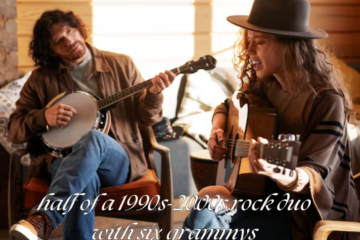Introduction
Woodstock is more than just a music festival; it’s a symbol of a cultural revolution. Woodstock, often considered the pinnacle of 1960s counterculture, was a festival that united more than 400,000 individuals in a grand celebration of peace, love, and music. From its humble beginnings to its lasting impact on music and culture, Woodstock remains an event that resonates with people around the world. But what made Woodstock so special? Why does it continue to hold such a significant place in history?
Table of Contents
The Origins of Woodstock
Woodstock was born out of a vision shared by four young men: John Roberts, Joel Rosenman, Artie Kornfeld, and Michael Lang. Their goal was to create a music festival that would be “an Aquarian Exposition: 3 Days of Peace & Music.” Initially, the festival was planned to be a small, profitable venture in Wallkill, New York. However, as word spread and the lineup of legendary performers grew, the event had to be moved to a larger location in Bethel, New York, on Max Yasgur’s 600-acre dairy farm. This change set the stage for what would become one of the most iconic music festivals in history.
The First Woodstock Festival (1969)
Woodstock occurred between August 15 and August 18 in 1969. Over the course of these four days, 32 acts performed, including legendary artists like Jimi Hendrix, Janis Joplin, The Who, and Santana. Despite the heavy rain, muddy conditions, and logistical challenges, the festival’s atmosphere was one of unity and harmony. People from all walks of life gathered to enjoy the music and to be a part of something much bigger than themselves. The festival’s motto, ‘Three Days of Harmony & Music,’ perfectly embodied the essence of the occasion.
Impact on Music and Culture
Woodstock wasn’t just a music festival; it was a cultural phenomenon. It embodied the spirit of the 1960s counterculture, championing ideals of peace, love, and resistance to authority. The festival also had a profound impact on the music industry, helping to catapult several artists to superstardom and influencing the development of genres like rock, folk, and psychedelic music. Woodstock showed the world that music could be a powerful tool for social change and self-expression.
Memorable Moments from Woodstock 1969
Woodstock is filled with unforgettable moments. One of the most memorable moments was Jimi Hendrix’s take on “The Star-Spangled Banner,” a version that transformed the national anthem for a whole generation. Another memorable moment was Joe Cocker’s soulful performance of “With a Little Help from My Friends.” The festival was also marked by spontaneous acts of kindness and a sense of community that defined the event. From the free food kitchens set up by local communities to the impromptu jam sessions in the campsites, Woodstock was about more than just the music.
The Legacy of Woodstock 1969
Even today, Woodstock 1969 is remembered as a pivotal moment in history. It has been immortalized in countless documentaries, books, and films. The festival set a precedent for large-scale music events and established the template for what a music festival could be. It also left behind a legacy of peace, love, and music that continues to inspire new generations. Each year, the festival is commemorated through various events and tributes, ensuring that the spirit of Woodstock lives on.
Woodstock ’94: The 25th Anniversary
Twenty-five years after the original Woodstock, a new generation had the chance to experience the magic. Woodstock ’94, held in Saugerties, New York, was a celebration of the festival’s legacy. With performances from bands like Green Day, Nine Inch Nails, and Aerosmith, the event was a mix of nostalgia and contemporary music. Despite the rainy weather, which led to muddy conditions similar to those in 1969, the festival was a success, drawing over 350,000 attendees. However, it lacked the cultural significance of the original Woodstock, as it was more of a commercial event.
Woodstock ’99: The Controversial Revival
Woodstock ’99 was meant to celebrate the festival’s 30th anniversary, but it ended up being remembered for all the wrong reasons. Held in Rome, New York, the event featured a lineup of popular bands like Red Hot Chili Peppers, Korn, and Limp Bizkit. However, the festival was marred by issues such as overcrowding, overpriced food and water, and a lack of sanitation. These problems led to riots, fires, and violence, tarnishing the Woodstock brand. The chaos of Woodstock ’99 was a stark contrast to the peaceful atmosphere of the original festival.
Why Woodstock ’99 Failed
Woodstock ’99 failed for several reasons. Initially, the organizers did not fully grasp the cultural changes that had taken place since the original Woodstock. The music scene had changed, and the aggressive, angst-filled music of the late 1990s didn’t align with the values of peace and love that Woodstock was known for. Second, the festival was poorly organized, with inadequate facilities and security. The commercialization of the event also contributed to the dissatisfaction of attendees, who felt that the spirit of Woodstock had been lost.
The Attempted Woodstock 50 (2019)
In 2019, there was an attempt to revive Woodstock for its 50th anniversary. However, the event was plagued with issues from the start. The planning process was chaotic, with multiple venue changes, legal disputes, and funding problems. Even though the organizers put in their utmost effort, Woodstock 50 was eventually called off, leaving fans deeply disappointed. The failure of Woodstock 50 raised questions about whether the festival’s legacy could be successfully revived in the modern era.
Woodstock’s influence on modern festivals
Despite the failures of its revivals, Woodstock’s influence on modern music festivals is undeniable. The idea of a multi-day, open-air music festival featuring a wide range of artists has become a mainstay in the music scene. Festivals like Coachella, Glastonbury, and Bonnaroo all owe a debt to the Woodstock model. The sense of community, freedom, and self-expression that Woodstock promoted continues to be a key aspect of modern festival culture.
The Future of Woodstock Events
Will there ever be another Woodstock? It’s hard to say. The challenges of organizing a festival that lives up to the legacy of the original Woodstock are significant. However, the spirit of Woodstock—its message of peace, love, and music—is timeless. If another Woodstock event were to be held, it would need to adapt to the modern world while staying true to the values that made the original festival so special. Whether through smaller commemorative events or a full-scale revival, the Woodstock brand still has the potential to inspire future generations.
Cultural Significance of Woodstock Today
Why does Woodstock still resonate with us today? Perhaps it’s because the festival represents a moment when people came together in the name of peace and love, something that remains relevant in today’s world. The music, the messages, and the memories of Woodstock continue to inspire and influence people across generations. In a world that often feels divided, Woodstock serves as a reminder of the power of unity and the enduring impact of music on our lives.
Woodstock in Popular Culture
Woodstock has left an indelible mark on popular culture. It has been depicted in movies like “Woodstock” (1970) and “Taking Woodstock” (2009), and its influence can be seen in countless other films, documentaries, and books. Musicians continue to draw inspiration from Woodstock, and the festival’s fashion—with its tie-dye shirts, fringe vests, and flower crowns—has become iconic. The art and music of Woodstock have transcended the event itself, becoming symbols of a generation that dared to dream of a better world.
Conclusion
Woodstock is more than just a music festival; it’s a symbol of a time when music had the power to bring people together and inspire change. From its humble beginnings to its lasting legacy, Woodstock has left an indelible mark on the world. Whether through its influence on music, its role in shaping culture, or its enduring message of peace and love, Woodstock remains a beacon of hope and a testament to the power of music.
FAQs
What made Woodstock ’69 so iconic?
Woodstock ’69 was iconic because it captured the spirit of a generation that sought peace, love, and social change. The music, the atmosphere, and the cultural significance of the event all contributed to its legendary status.
How many people attended the first Woodstock?
Over 400,000 people attended the first Woodstock festival in 1969, far exceeding the expected turnout and creating an atmosphere of unity and togetherness.
Why did Woodstock ’99 end in chaos?
Woodstock ’99 ended in chaos due to a combination of poor organization, overcrowding, and a lineup of aggressive bands that fueled a tense atmosphere. The event’s commercialization also resulted in attendee dissatisfaction.
Will there be another Woodstock festival?
While there have been attempts to revive Woodstock, such as Woodstock 50 in 2019, organizing a festival that lives up to the original’s legacy is challenging. However, the possibility of future Woodstock events remains open.
What lessons can be learned from Woodstock’s history?
Woodstock’s history teaches us the importance of staying true to core values, such as peace and community, while adapting to changing cultural landscapes. It also highlights the power of music to bring people together and inspire change.
You Can See Latest Updates On: Leg Warmers



